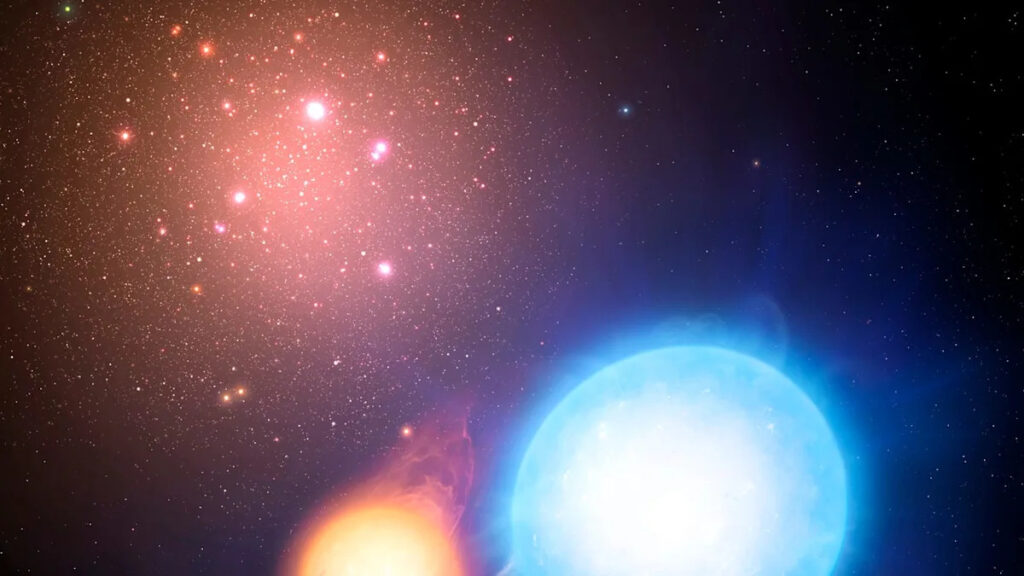
In a groundbreaking study that could reshape our understanding of gravity, researchers from South Korea’s Sejong University have presented findings that challenge the long-standing Newton-Einstein model of gravity. This study, published in The Astrophysical Journal, suggests that the behavior of certain slow-moving celestial bodies, known as “wide binary” stars, cannot be fully explained by current gravitational theories that rely on dark matter.
Einstein’s Theory of General Relativity, an essential update to Newton’s Law of Universal Gravitation, has served as the cornerstone of modern physics for over a century. However, the new research indicates that both Newton and Einstein’s theories may have limitations, particularly in explaining the peculiar gravitational interactions observed in wide binaries at low accelerations.
Challenging the Status Quo
The study, led by Kyu-Hyun Chae, analyzed data from 26,500 wide binaries within 650 light-years, captured by the European Space Agency’s Gaia space observatory. Chae discovered that when these stars experienced extremely low orbital accelerations, around 0.1 nanometers per second squared, their observed accelerations were 30 to 40 percent higher than what Newton-Einstein models would predict. However, at accelerations above 10 nanometers per second squared, the stars’ behavior aligned with existing theories.
This anomaly at ultra-low accelerations suggests that the standard model of gravity, which heavily relies on the concept of dark matter, might not be sufficient to explain all gravitational phenomena. Instead, Chae proposes that Modified Newtonian Dynamics (MOND), a theory introduced by Israeli scientist Mordehai Milgrom in 1983, could offer a more accurate explanation.
Exploring Modified Newtonian Dynamics
MOND challenges the traditional understanding of gravity by suggesting that the gravitational force experienced by an object is not solely dependent on its mass and distance from other objects, but also on the object’s acceleration. This theory posits that at extremely low accelerations, the gravitational force deviates from the predictions of Newton’s inverse-square law.
Chae’s study supports this idea, demonstrating that a MOND-influenced theory of gravity, specifically a model known as A Quadratic Lagrangian (AQUAL), can account for the unexpected acceleration boost observed in wide binaries. According to Chae, the study “represents direct evidence for the breakdown of standard gravity at weak acceleration.”
“This systematic deviation agrees with the boost factor that the AQUAL theory predicts for kinematic accelerations in circular orbits under the Galactic external field,” Chae states in the paper.
Implications and Future Research
The implications of this research are profound, suggesting that our current understanding of gravity might be incomplete. While MOND offers a compelling alternative, it is not without its own limitations and challenges. The theory remains a hypothesis, requiring further observational support to potentially upend the modern understanding of gravity and the universe.
As the scientific community digests these findings, the debate over the validity of MOND versus the Newton-Einstein model is likely to intensify. Future research will be crucial in determining whether MOND can be integrated into a broader framework that includes both quantum mechanics and general relativity.
Meanwhile, the study has reignited interest in exploring alternative theories of gravity, encouraging scientists to reconsider the fundamental principles that govern our universe. As new data from space observatories and experimental physics becomes available, the quest to understand gravity in its entirety continues.
In conclusion, while the study from Sejong University presents a significant challenge to established gravitational theories, it also opens the door to new possibilities and advancements in our comprehension of the cosmos. The scientific community eagerly awaits further developments in this intriguing field of study.





